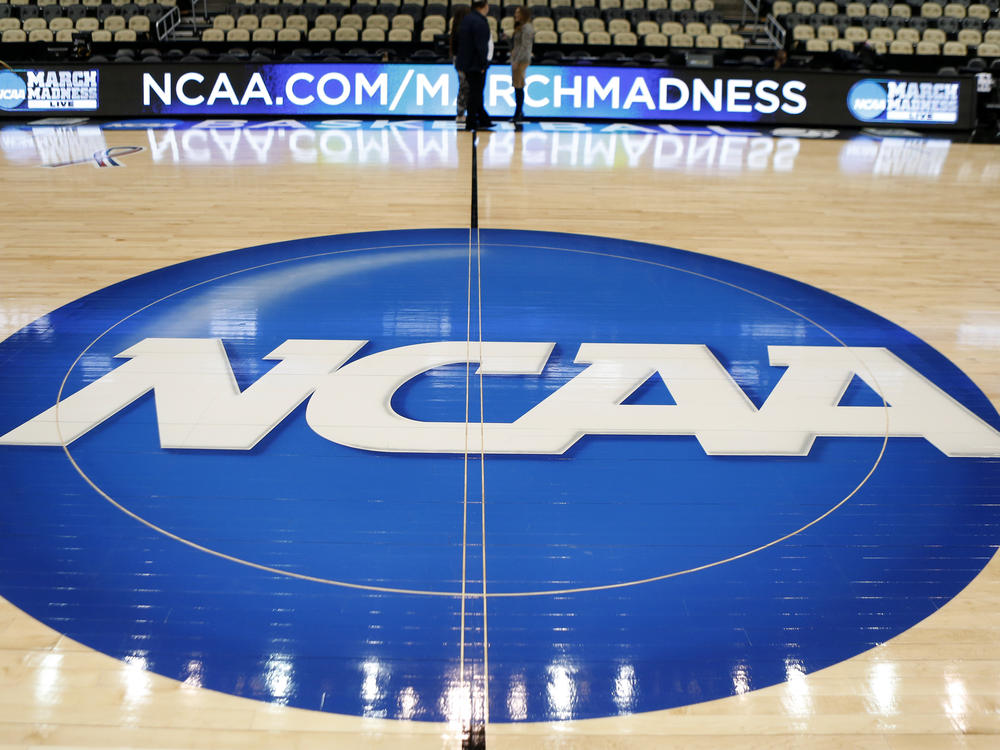Section Branding
Header Content
A jury finds the NCAA is not responsible for the death of a college football player
Primary Content
LOS ANGELES — In a verdict that could affect countless claims by athletes who sue sports organizations for head injuries, a Los Angeles jury on Tuesday rejected a lawsuit seeking $55 million by the widow of a former USC football player who said the NCAA failed to protect him from repeated head trauma that led to his death.
Matthew Gee, a linebacker on the 1990 Rose Bowl-winning squad, endured an estimated 6,000 hits as a college athlete, lawyers for his widow said. They alleged these impacts caused permanent brain damage, and led to cocaine and alcohol abuse that eventually killed him at age 49.
The NCAA, the governing body of U.S. college sports, said it had nothing to do with Gee's death, which it said was a sudden cardiac arrest brought on by untreated hypertension and acute cocaine toxicity. A lawyer for the NCAA said Gee suffered from many other health problems not related to football, such as liver cirrhosis, that would have eventually killed him.
Hundreds of wrongful death and personal injury lawsuits have been brought by college football players against the NCAA in the past decade, but Gee's was the first one to reach a jury. The suit alleged that hits to the head led to chronic traumatic encephalopathy, a degenerative brain disease known by the acronym CTE.
Judge Terry Green told jurors in Los Angeles Superior Court they "made history" in the first case of its kind.
The result could serve as a caution to lawyers preparing to take similar cases to trial, said Dan Lust, a sports law attorney and professor at New York Law School. Before the trial, he had said that a Gee victory could have opened the floodgates against the NCAA. Now, the NCAA has more leverage in future cases.
"Any plaintiff's attorney is going to think twice before putting all the chips in the table and pushing them to the middle and saying, 'We're going to take our case to trial and see what happens,'" Lust said. "You're going to be much less inclined to take that risk from a cost-benefit perspective."
Alana Gee choked up as the verdict was read and had tears in her eyes afterward. She told one of her lawyers that she didn't understand how the jury came to that decision, but thanked the seven women and five men personally as they left the courtroom. She declined to comment afterward.
"We feel deep sympathy for the Gee family right off the bat," Will Stute, the NCAA attorney, said afterward. "But we feel like this verdict is a vindication of the position we've taken in all these cases, which is the science and medicine in Matthew Gee's circumstance did not support causation."
Stute had argued that medical evidence is not clear on what causes CTE, and what the impacts are from that disease.
Attorneys for Gee said CTE, which is found in athletes and military veterans who suffered repetitive brain injuries, was an indirect cause of death because head trauma has been shown to promote substance abuse.
Alana Gee had testified that the college sweethearts had 20 good years of marriage before her husband's mental health began to deteriorate and he became angry, depressed and impulsive, and began overeating and abusing drugs and alcohol.
The NCAA said the case hinged on what it knew at the time Gee played, from 1988-92, and not about CTE, which was first discovered in the brain of a deceased NFL player in 2005.
Gee never reported having a concussion and said in an application to play with the Raiders after graduating that he had never been knocked unconscious, Stute said.
"You can't hold the NCAA responsible for something 40 years later that nobody ever reported," Stute said in his closing argument. "The plaintiffs want you in a time travel machine. We don't have one ... at the NCAA. It's not fair."
Attorneys for Gee's family said there was no doubt that Matt Gee suffered concussions and countless sub-concussive blows.
Mike Salmon, a teammate who went on to play in the NFL, testified that Gee, who was team captain his senior year, once was so dazed from a hit that he couldn't call the next play.
Gee was one of five linebackers on the 1989 Trojans squad who died before turning 50. All displayed signs of mental deterioration associated with head trauma.
As with teammate and NFL star Junior Seau, who killed himself in 2012, Gee's brain was examined posthumously at Boston University's Chronic Traumatic Encephalopathy Center and found to have CTE.
Jurors were not allowed to hear testimony about Gee's deceased teammates.
Alana Gee's lawyers had argued that the NCAA, which was founded in 1906 for athlete safety, had known about impacts from head injuries since the 1930s but failed to educate players, ban headfirst contact, or implement baseline testing for concussion symptoms.
Copyright 2022 NPR. To see more, visit https://www.npr.org.

